Could rice be the key to Southern Black farmers' battle against climate change?
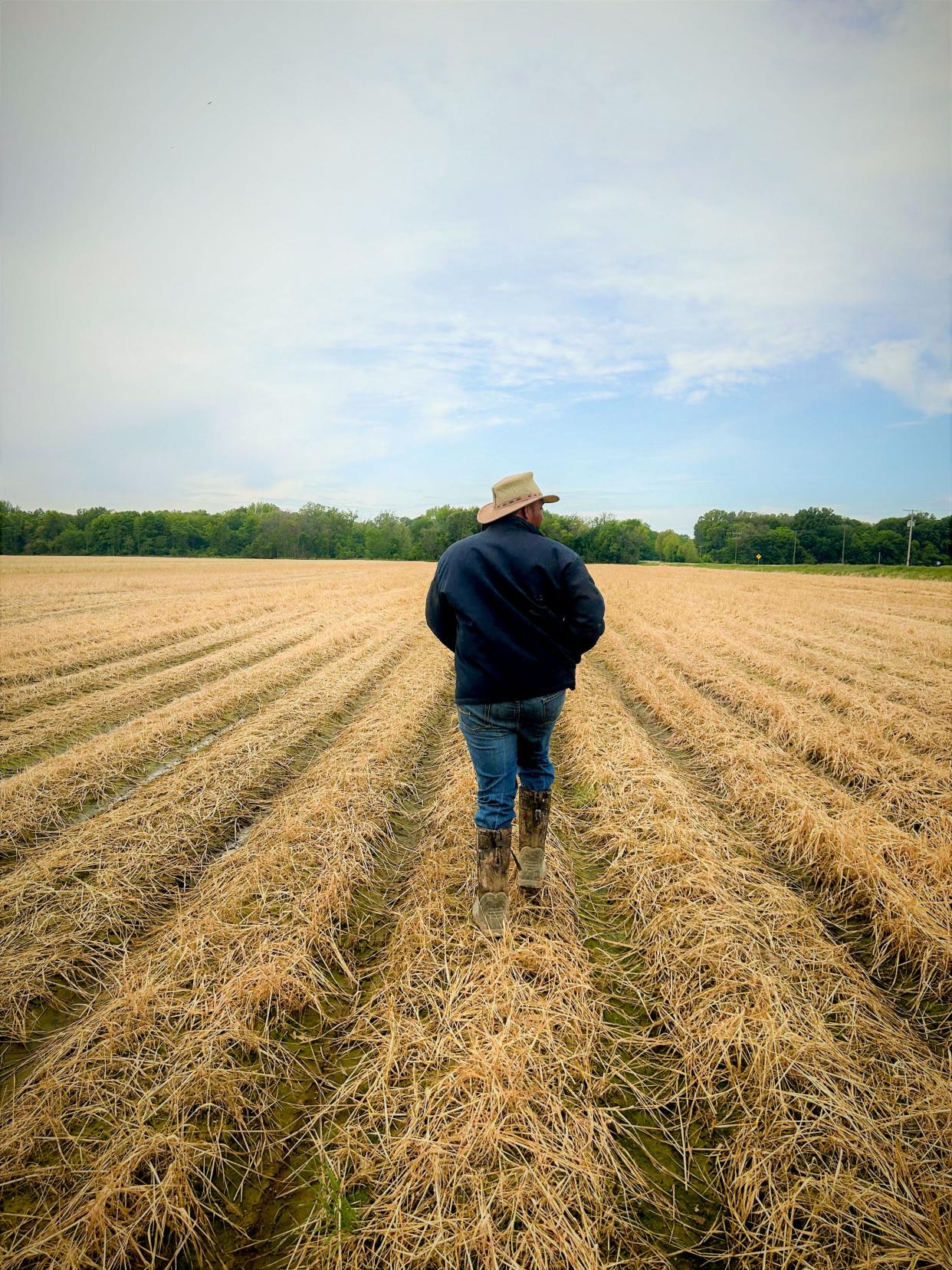
Disaster helped make the Arkansas Delta lowlands favorable for farming. It also contributed to the decline of Black-owned farmland.
The Great Mississippi Flood of 1927 was the most devastating flood in U.S. history. It displaced nearly 640,000 people, mostly in Arkansas, Mississippi and Louisiana. A disproportionate number of the displaced were Black. Some were held in refugee camps. Others fled for work elsewhere, hastening the Great Migration of Southern Black farmers.
Many of the Black farmers who were most impacted lived and worked in flood-prone areas, and that was not by accident. Minority farmers have long been saddled with poor land and not much of it. Most of the good farms belonged to white farmers.
"They homesteaded, they had options to go buy land when my ancestors were slaves," said PJ Haynie, a fifth-generation row cropper who grows 1,000 acres of rice on the Arkansas Delta and co-owns a rice mill. "After slavery, most African Americans got what was left over, which was mostly marginal ground."
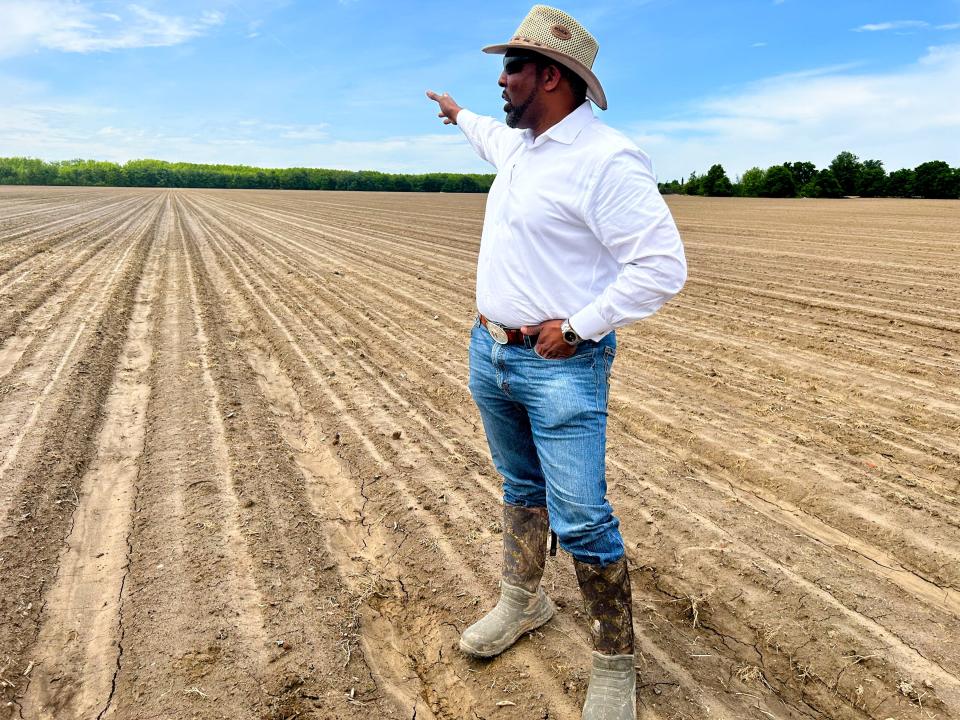
Still, just two generations after the Emancipation Proclamation, Black farmers had accumulated an estimated 16 million acres of farmland in the country. Then decades of discrimination, largely by the Department of Agriculture, chipped away at that achievement. By 1990, Black farmers lost 90% of that land, while white farmers lost only 2% of their acreage.
But there are still Black farmers, who still face discrimination along with a newer challenge: climate change.
In late April, Haynie wore boots nearly up to his knees. His rice field was damp but drying quickly considering the fact that just days earlier it was full of standing water. Still, he had no trouble digging a rice seed from the dirt with his pocketknife. A shoot pushed through the bran. Alive.
"Because these fields are so flat and it's such low-lying land, rice is the only thing that won't drown out when you get a 6-inch rain in the middle of the summer," Haynie said, turning the grain in his hand. "Corn, soybeans, cotton – they don't like to get their feet wet."
He sliced open a bag of one of his latest crops: medium-grain rice, one specialty of a California rice industry that's suffered from years of drought. It drove that state's rice production down 50% last year.
His daughter, a pre-med student, worked on the family farm a couple of summers back. She visited his rice mill and turned to her father on the way home.
"And her exact words were, 'We can feed the world, Dad,'" Haynie said.
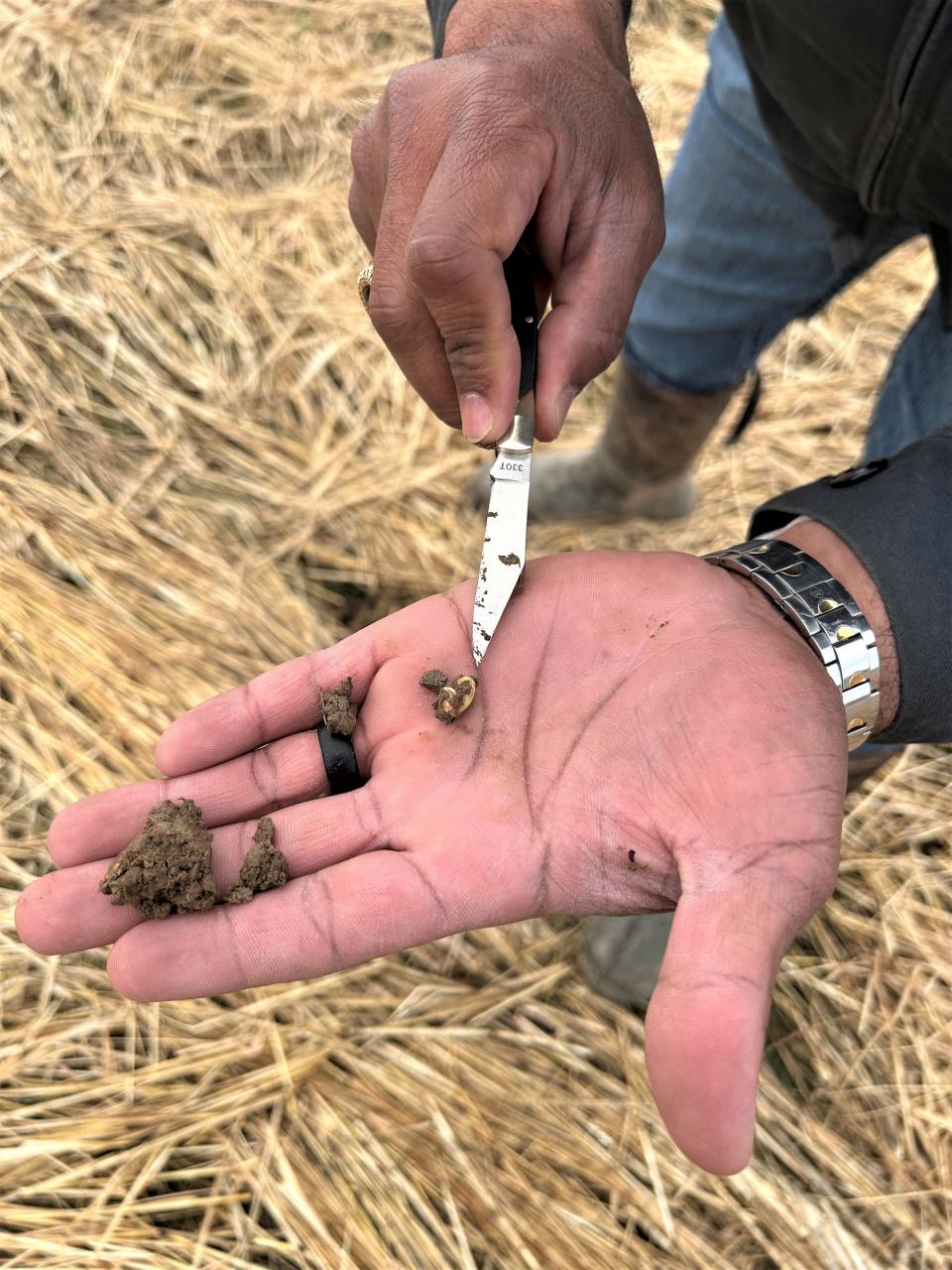
As the water rises, the rice still grows
"Rice is a tough crop to grow, but it's a rewarding one because you're growing food rather than feed," said Brandy Carroll, director of the Arkansas Farm Bureau's commodities division. "It's a nice thing to look at your fields and think about how many people you can feed from your crops."
Carroll knows. She grew up in Poinsett County, Arkansas, flagging the rice-seeding planes to the furrows on her family farm before GPS took over that hard work.
Now, she said, the crop is generates a billion dollars in annual revenue in the state, with Arkansas growing between 1.1 million-1.5 million acres each year. For many years, Arkansas has been the No. 1 rice-producing state in the nation, growing just under half of the nation's crop, Carroll said.
These lowlands, with the sort of mineral-rich alluvial soil favorable for farming and a subterranean aquifer that spans the Delta, are well-adapted to rice.
"And in many cases, not much else," Carroll said. "There's hardpan under the topsoil that holds water, which is great for rice, but challenging for other crops at times."
Rice requires quite a lot of water, and there is no shortage of water in Arkansas. This year was especially wet, according to the National Weather Service in Little Rock, Arkansas. Through April, Pine Bluff got 27.79 inches of rain – that's 9.06 inches above average.
"When we have a wet year, the rice is happy and so are the farmers," Carroll said.
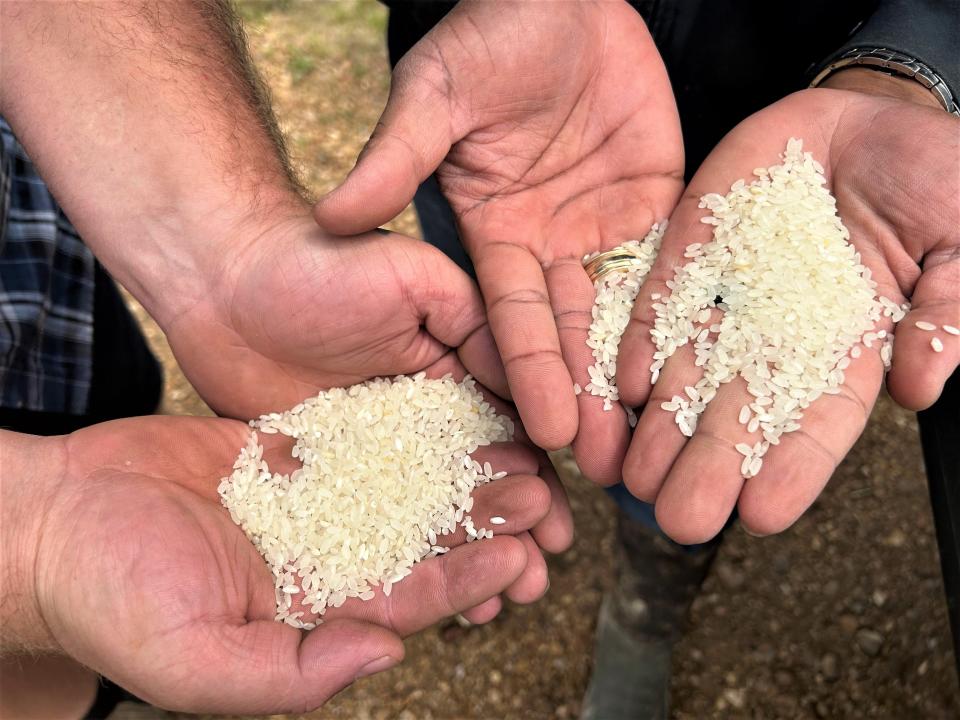
Arkansas has another advantage over other rice-growing states, positioned as it is with access to both the Arkansas and Mississippi rivers, important shipping arteries. And though the state exports some "rough" or unmilled rice, the rice milling industry is booming.
Since agriculture is a big part of the economy in the Delta, that's crucial. Processing the state's rice in mills such as Haynie's adds value and keeps a lot of cash right in the Delta, Carroll said.
The challenges of rice
But as with anything that grows in the ground, rice farming has its challenges. Though rice likes hot humid days, it prefers to cool off at night. When the temperatures don't drop, the grain has a tendency to break.
The Arkansas Rice Research and Promotion Board is working with the University of Arkansas in a collaborative breeding program, created with funds invested by farmers, to develop a strain of rice that's more heat tolerant.
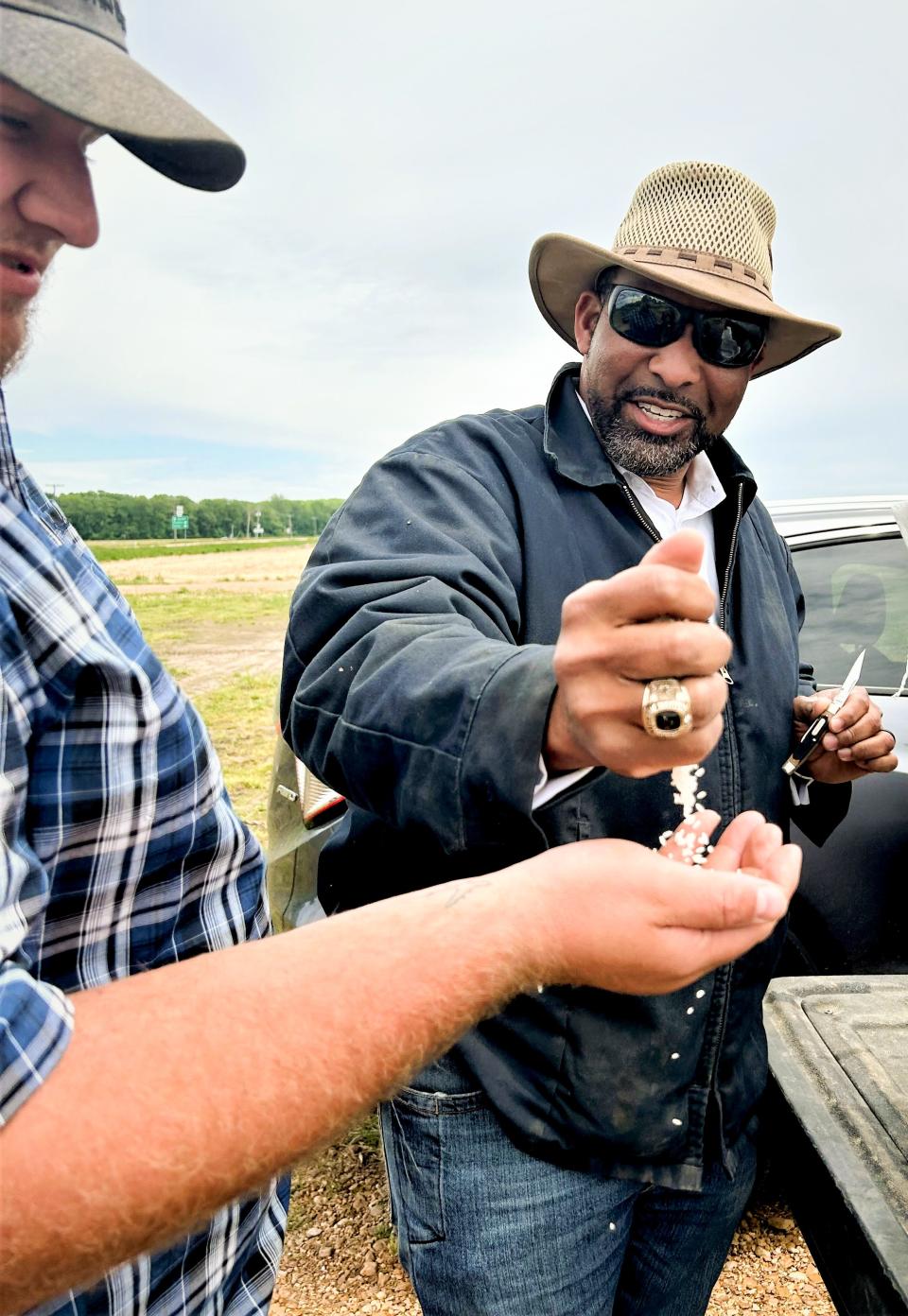
"These farmers are investing their own money to adapt and thrive and flourish and continue to provide a product that customers want," Carroll said. "That's important when you're attempting to sell 1 million acres of rice. They're making sure their product is adapted to our changing world."
Another downside of rice is that it's one of the leading methane-emitting crops. The standing water it tolerates acts as a natural herbicide and pest control, but it also creates an anaerobic environment that emits greenhouse gas.
Haynie is the chairman of the National Black Growers Council, which has a partnership with the Ducks Unlimited Rice Stewardship. Together in 2022, they received $80 million through a USDA program to support sustainable rice farming, some of it earmarked specifically for historically underserved farmers.
"We're (trying) to showcase and lead and grow the next generation, and the only way we can do this is to share knowledge," Haynie said in an interview shortly after the grant was awarded.
Robot farmers?: Machines are crawling through America's fields. And some have lasers.
Haynie, for example, uses several growing methods to reduce methane, including eliminating the standing water that traps it, when possible.
Sharing strategies like these can make Black-owned farms more sustainable, which creates value and protects Black-owned farms, PJ Haynie said.
"What I say is that, if we protect the herd, the herd will grow," he said. "If we protect the small amount of Black farmers that are left in America, it will create opportunities for their children and grandchildren, their nieces and nephews."
Rice, he believes, has the potential to do that.
Beating the odds
Haynie co-owns Arkansas River Rice, a Pine Bluff rice mill, with Alabama farmer Billy Bridgeforth. The operation, which Haynie said is the only Black-owned rice mill in the United States, can process 22 metric tons of grain an hour. Both men, who also help run farms founded by their formerly enslaved ancestors, offer reasonable rice packaging rates for small farmers and serve as mentors to other growers.
"The work that we're doing out here on the farm, the brand that we're trying to move in the rice mill, and also the rice that we're buying from other farmers," he said. "That's never happened in the Black farming community before, and that's exciting."
For subscribers: Black farmers have lived here for generations. Now, a Ford plant is changing the landscape.
In Pine Bluff, Arkansas, nearly 80% of the population is Black. But its white farmers have an advantage. The majority of the Black farmers in the Delta have smaller operations, which means less payout in the way of crop insurance, Haynie said.
That's just one of the reasons Black farmland ownership has dramatically declined across the U.S., he said.
"Black farmers are still dealing with the inequities of the past at the hands of the federal government, which are still creating present-day disparities," he said.
Haynie's family beat the odds. Besides the Arkansas land, Haynie farms in all four counties of Virginia's Northern Neck, a peninsula that juts into the brackish water where the Potomac River meets the Chesapeake Bay.
Haynie's great-great-grandfather, the Rev. Robert Haynie, was born on the Northern Neck as a slave. After emancipation, he purchased 60 acres of land on Sept. 14, 1867, at the age of 44.
"And by the grace of God, we still own it and have grown it from the original 60 acres," Haynie said.
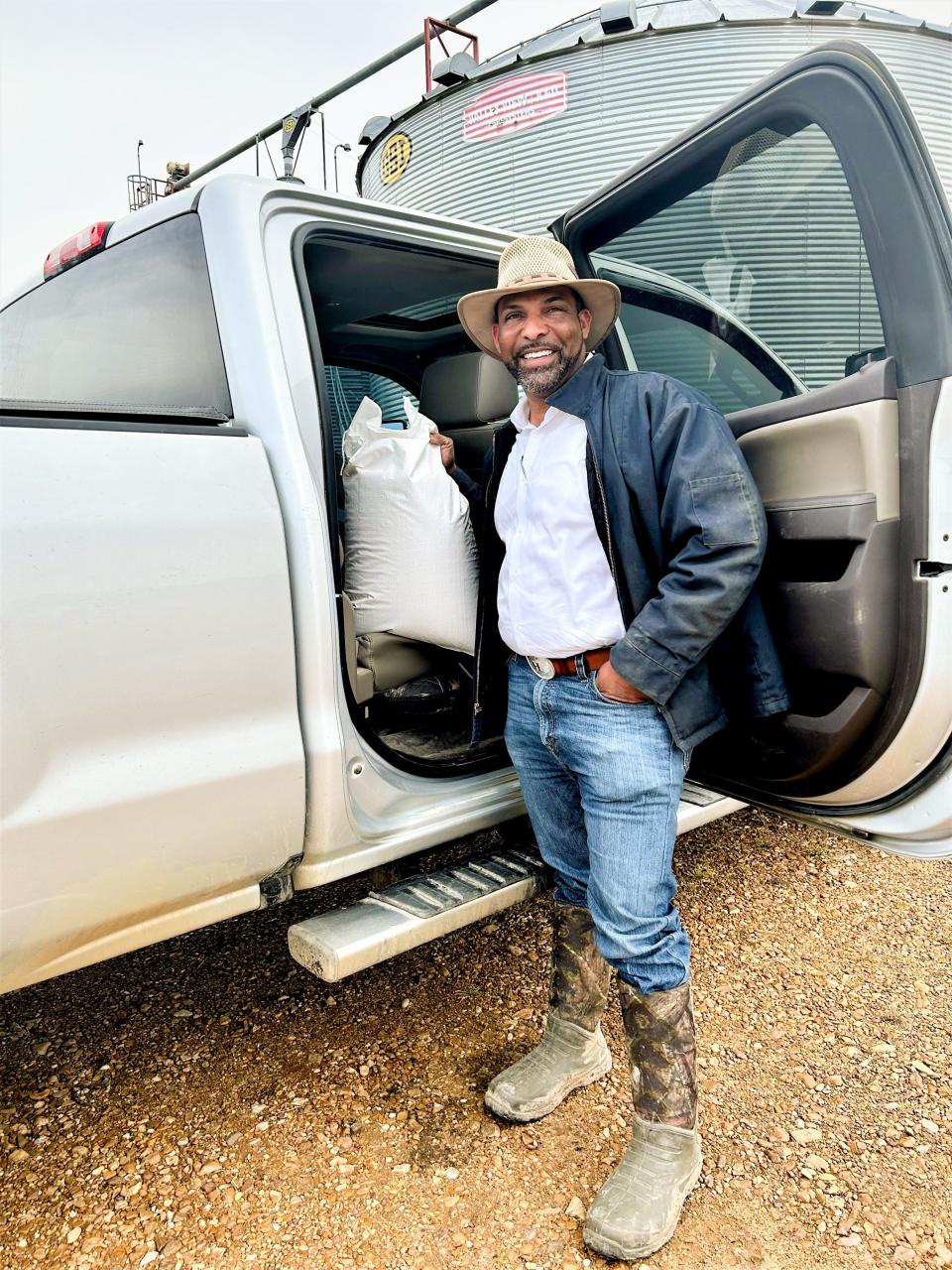
When asked what he thought his grandfather would say about the farm, the acres of row crops, the state-of-the-art mill, Haynie paused.
"I hope that he would say job well done," he said. "And I hope that my ancestors would be able to see the seeds that I'm trying to plant for the future."
This article originally appeared on USA TODAY NETWORK: In the face of climate change, Southern Black farmers plant rice

